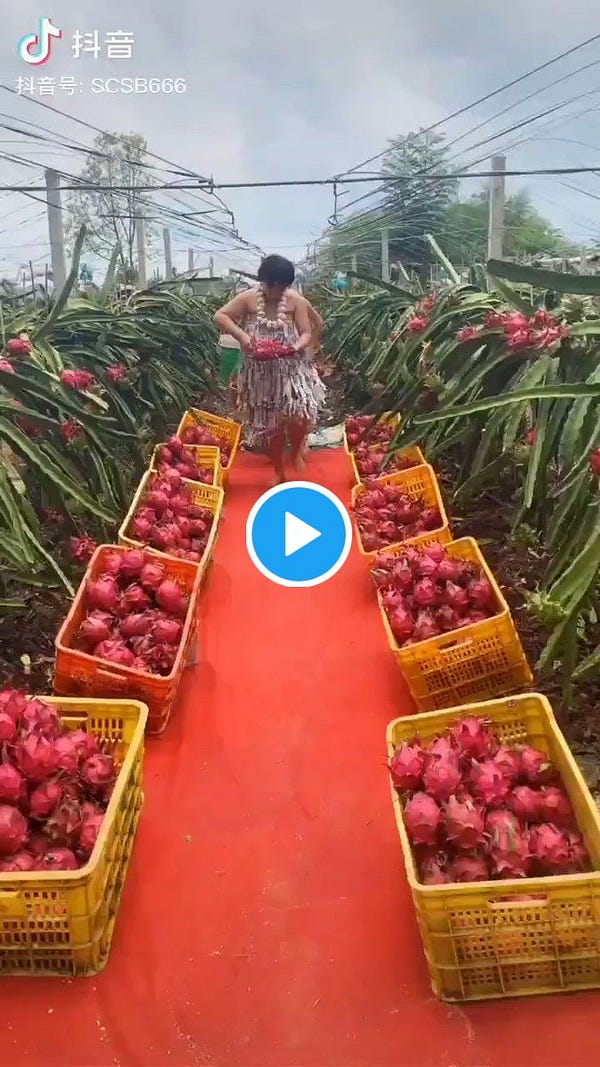Stealing Signs - Issue 41
Shopify - The New Template Company, The Uber Bull Perspective, Curators Are the New Creators, Short Run/Long Run, & Barn2Door Raises $$
Worth Reading
Shopify, the New Template Company
Myles Udland, Yahoo Finance
But in a world where investors, founders, creators, and consumers have all been raised on the idea of disintermediation as an inevitable market force that benefits consumers, that the most exciting new template business isn’t offering a specific product but merely offering a platform on which to sell a product is a logical conclusion.
Myles suggests Shopify is the new template with which entrepreneurs are building companies. If the recent batch of YC companies is any indication, he’s right:

The template company formula, according to Myles, is as follows:
“This [new company] is the [template company] of [a different industry].”
Shopify’s guiding principle is ‘arming the rebels,’ so, in this case, new companies are arming the rebels of different industries and generations. Using the YC examples above, Sutra is likely a platform for the long tail of fitness instructors to sell product and services online, Virtually is a platform for educators to sell products and services online, and Orange Health is a platform for physicians to sell products and services online. This trend matches what we’re seeing in the early-stage VC ecosystem, largely, I suspect, as a product of the COVID-induced digital transformation of our society.
It’s worth noting that the selected examples above from YC’s recent batch are building ‘Shopify for X’ in industries that are historically driven by offline interactions and inefficient service delivery. Fitness instructors primarily provide their service in person at gyms, educators primarily teach in-person and access to them is typically restricted, and physicians almost exclusively delivered their services in-person with arguably the least efficient service delivery of them all. It seems Shopify is the new template company because new infrastructure for service offerings is the most pressing need. As more offline products and services are forced online, the lack of adequate infrastructure to deliver them online is becoming more apparent.
The Uber Bull Perspective
Anuj Abrol’s Interview with Turner Novak
What if they add something like food delivery? As a consumer like me, when I’m on business, expensing an Uber between 2 places I’m going, or ordering something on Uber Eats, and when I’m at my house with my family, oh ‘I’m going to use the rewards from my Uber account to get free food.’ This whole thing compounds on itself, where different pieces do different things. You have this rewards bundle that keeps people in the ecosystem...”


Uber’s recent bundle of taxi and food delivery merely scratches the surface of what can turn into a massive long term advantage for the company. Both food delivery and transportation are critical services for many consumers, which means this bundle is highly likely to increase usage across both services, and, as Turner notes, the ability to apply rewards to both services is a powerful customer retention mechanism.
UberEats is a logical step for an Uber’s bundle strategy, but what could be next? I’m thinking freight. UberFreight receives significantly less attention than their consumer-facing services, but it could revolutionize logistics. Specifically, Uber would have an advantage in micro-logistics, like inter-city or inter-state logistics. From the driver’s perspective, an Uber bundle looks like transporting multiple goods, food and people. Adding packages from local merchants to a drivers’ trip feels like a logical next step — simply another good to the driver’s bundle. Of course, this would add time to a driver’s trip (I need to better understand how a driver values their minutes on the clock and, thus, how much each additional minute spent picking up a package, for example, impacts their economics), but it’d also put more money in their pocket. Especially since Uber can offer on-demand logistics capabilities, I’d imagine merchants would be willing to pay for convenience and speed.
Adding logistics to the Uber bundle has asymmetric value, though. It’d be significantly more valuable for customers than for drivers — not dissimilar from the value structure of Uber taxi today. Logistics in the Uber bundle would allow customers to receive any local good in 1 day, or even same day. Amazon has a firm grasp on delivery speed, but Uber logistics would enable any merchant to deliver with Amazonian speed, essentially democratizing same day and next day delivery.
While Uber logistics may not be as impactful to customer retention as food delivery, I believe it would make a significant impact. At the very least, it’s an additional component in the Uber retention flywheel.
Curators Are the New Creators
Gaby Goldberg, Chapter One
It’s clear that curating content within a particular niche can be an incredible way to build an audience and add value. Content curation hooks people in with the promise of learning new skills while saving time, and it keeps them coming back by building a sense of community around a particular subject or vertical.
Excellent analysis of the evolution of online content. As independent content creators multiply and historical content sources are unbundled, we’re reaching the point of content overload — there’s so much content out there in so many different that merely finding the best things to read can feel like an insurmountable task.
Naturally, a wave of rebundling has emerged — as Gaby calls it, the business model of good taste. She notes that people are literally willing to pay for the creation of free content — Robert Cottrell, the man behind The Browser, apparently reads upwards of 1,000 articles per day and picks his five favorites to send out to nearly 50k subscribers with a short summary for $5/month.
Gaby’s post will prove to be prescient — many, many more curators will emerge and monetize expert, tasteful content curation. Potentially even things beyond content like products and services. The optimal approaches to curation monetization appear to be 1. Building a brand and/or following, and 2. Specialization.
Build a brand/following. In this case, the curator has a large following or established brand which breeds trust with their audience. More importantly, the audience trusts the creator’s recommendations. This is the fastest path to curation monetization.
Specialization. This approach very quickly builds the curator’s credibility. The curator becomes a trusted source of topic or industry knowledge and can even emerge as the go-to source for said topic/industry. A few examples that come to mind:
Justin Gage — Technical Writing & Developer Tools
Nikhil Krishnan — Healthcare & Healthcare Technology
Jamin Ball — SaaS IPOs
Sarah Tavel — Marketplaces
Matt Mazzeo — Social Products
It seems clear to me that the curation approach is applicable beyond content. Matt Mazzeo is a prime example — he’s become an expert in consumer and social products, and set up a number from which he texts out links to new social products. I’d imagine it’s one of the best places to find out about new these products. Another industry that could benefit from a wave of curators is education. As teaching and learning shifts online due to COVID, students, teachers, and parents will experience increasing friction in finding the best resources.
Short Run/ Long Run
Aashay Sanghvi, Haystack VC
the real danger markups pose for early-stage investors is in acting as proxies for truth; behaving as short run noise, when long run signal matters more. Being a great early stage investor does not equate to being right 100% of the time, but blind faith in personal ability based on portfolio markups is also not the way.
Appreciation of an asset’s unrealized value, or a markup, is commonly used as a measure of success for venture firms. As Rob Go of NextView Ventures puts it,
A markup happens when VC B invests in a portfolio company of VC A at a higher price that the company’s last round. This allows VC A to show that their holdings have increased in value, and generally makes the VC and their LPs happy.
It’s a quick way to demonstrate success via a metric with shared value — investors accept an increase in valuation as tangible progress, as opposed to customer growth or a key hire. While a common metric of success, Aashay identifies a few reasons why markups can be dangerous for early-stage funds, the funds which rely on them most heavily.
The real danger with markups for early stage investors, Aashay suggests, is when they become proxies for truth. As we’ve discussed here previously, the incentive structure in VC perpetuates this phenomenon. Early-stage VCs, especially young VCs, can fall into a pattern of optimizing for markups, not outcomes, to demonstrate success because of the extremely long time horizon in this industry and because markups are one of the few short term measures of success with shared value — $$$.
<stuff> Weekly
LOL Weekly: Social eCommerce
lol can’t wait to see Walmart’s products featured here. Or will this be Microsoft’s new Teams sales strategy?
Funding Weekly: Barn2Door
Barn2Door’s tool is also helping usher in a new wave of direct-to-consumer sales. Big brands like Pepsi and Impossible Foods each launched D2C channels this year. Chipotle launched a service allowing consumers to buy direct from its farm suppliers like Niman Ranch and McKaskle Family Farm. And smaller players like regional restaurant suppliers and startup CPG snack brands like Pig Out! and Renewal Mill are selling direct to consumers.
Barn2Door raised a $6M round from Bullpen Capital, Quiet Capital, RAINE Ventures, Lead Edge Capital, Global Founders Capital, Sugar Mountain Capital, and others, raising their total funding to $11.6M.
Barn2Door appears to be executing a classic Saas-enabled marketplace strategy. Their software helps independent farms navigate the complexities of eCommerce from fulfillment to packing to invoicing. As they acquire independent farms with their SaaS offering, the aggregated customers become an attractive pool of farms for consumers to engage with directly — this is where the marketplace comes in. Barn2Door helps connect farms directly with customers which, given the recent acceleration of eCommerce, feels like perfect timing.
Baseball Weekly: MLB Stadium Islands
Super cool. If you overlay every MLB stadium you get “islands” — sections of each team’s field that are unique from every other stadium in the MLB. The Athletics famously massive foul territory is clearly visible, as are the gaps in the Rockies’ Coors Field in Colorado, and the Tigers’ seemingly endless center field in Detroit. Notably, the Rangers stadium is not visible — nothing about their stadium, at least the playing surface, is unique.




Art Weekly: War of Roses [Sound Graph], 2019
Sarah Morris
‘Machines do not make us into Machines’, the artist’s first solo UK exhibition in six years, opens at White Cube Bermondsey next week, acting as a sort of home-coming for the Kent-born artist, who is now based in the US. Since the mid-1990s, Morris has exhibited at Hamburger Bahnhof in Berlin, Museo d’Arte Moderna di Bologna and Palais de Tokyo in Paris, as well as showing films at London’s Barbican Centre, Chicago’s Museum of Contemporary Art and the Guggenheim, New York. “That grid” and “that noise” have long appeared in varying forms in Morris’ graphic, abstract works, but stand out as the grounding concepts of her new show, which incorporates paintings, films, sculpture and a site-specific wall painting.
Nowhere are sound and mathematical placement so integral as in Sound Graphs, a series Morris started work on two years ago that maps audio recordings onto canvases, forming paintings of colourful bars and dots.






